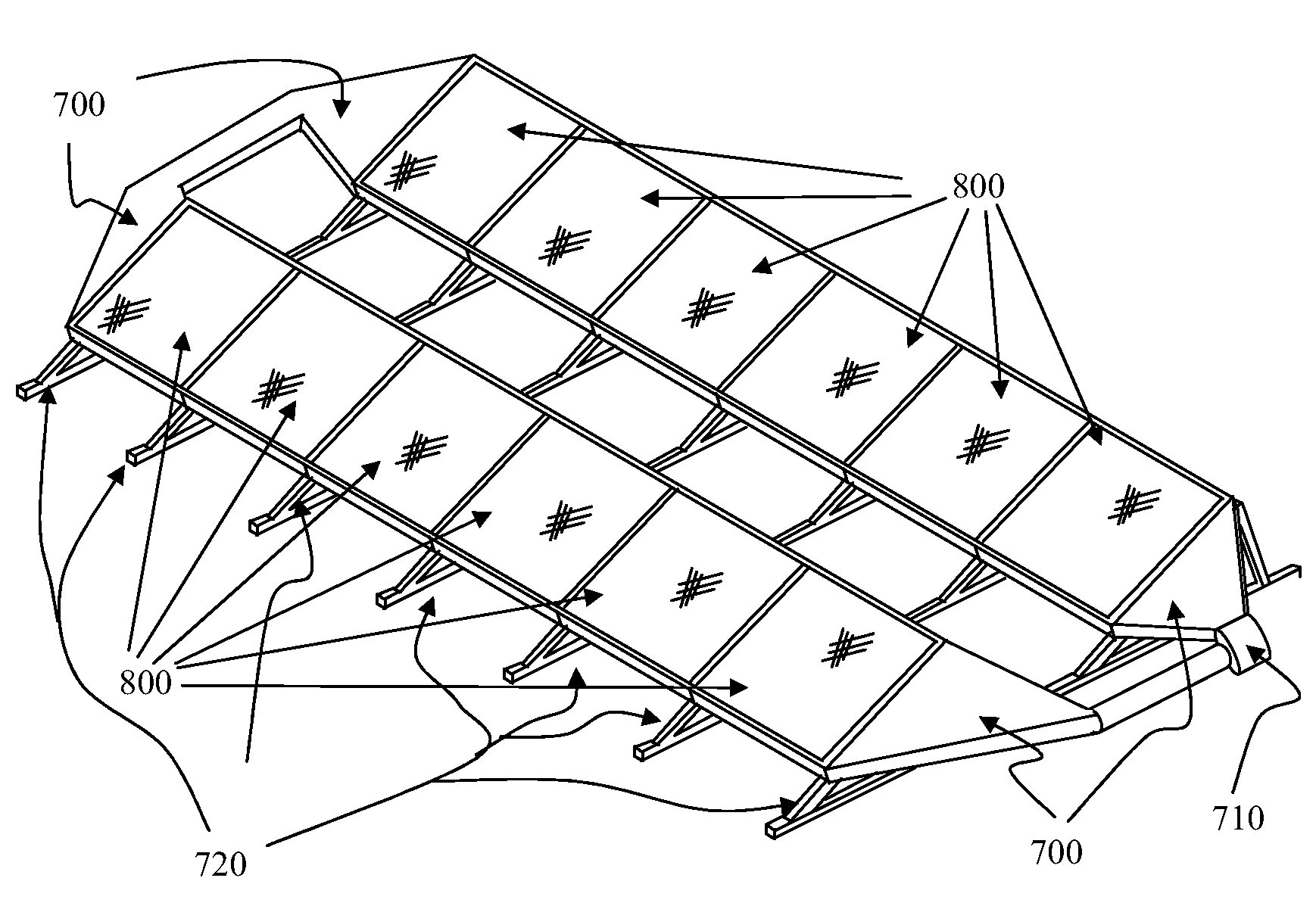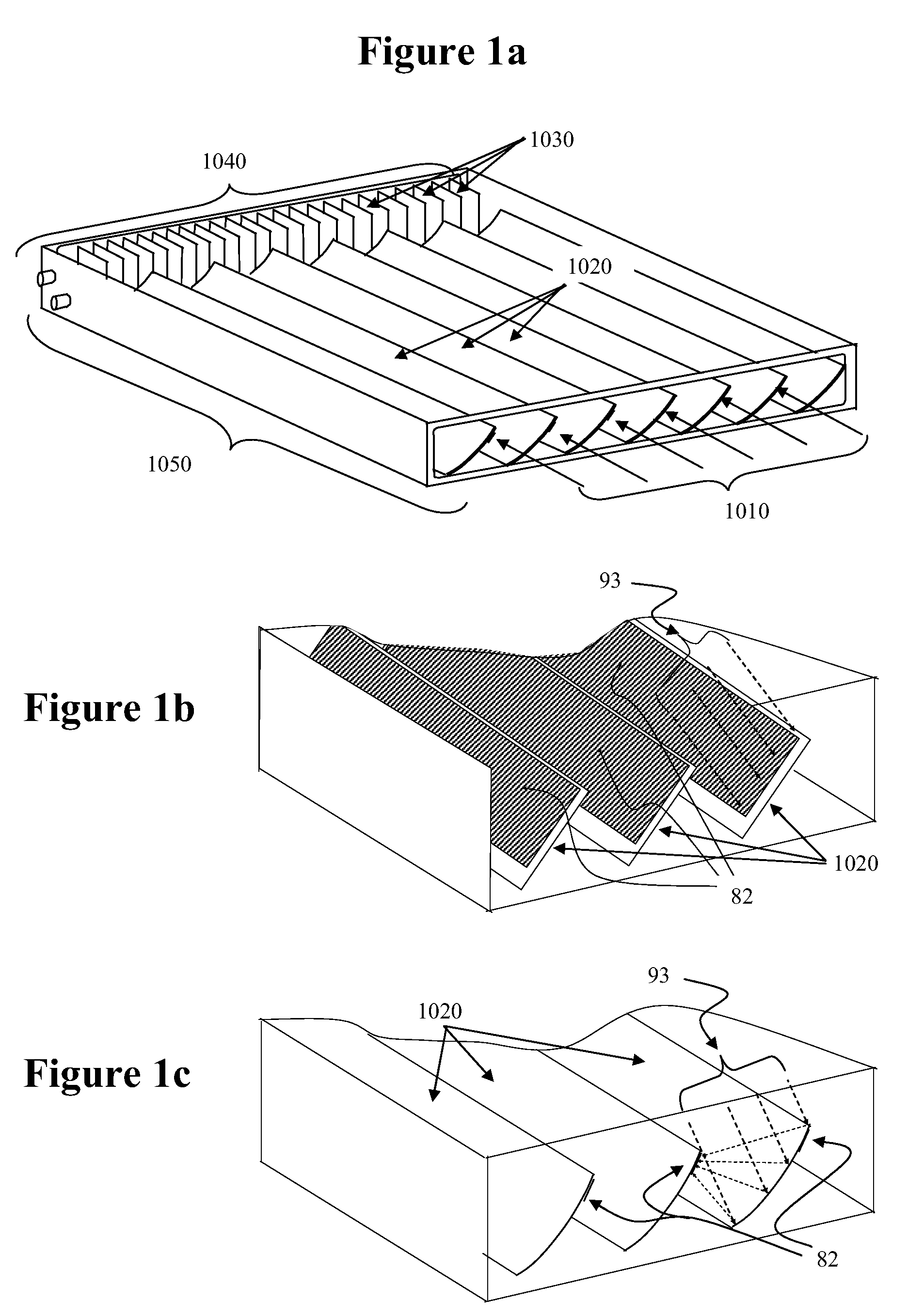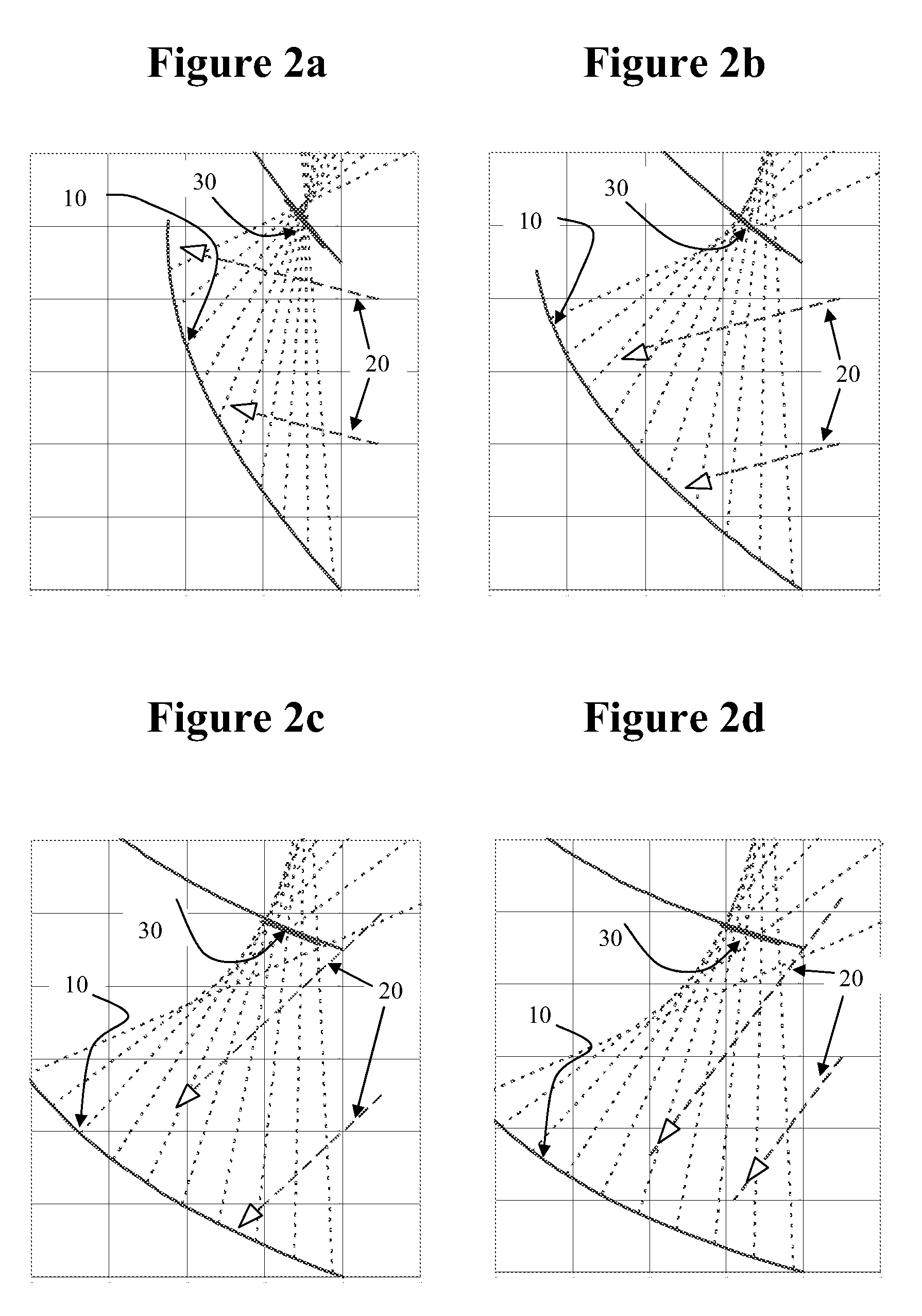Solar energy conversion devices and systems
a technology of solar energy and conversion devices, applied in the direction of heat collector mounting/support, thermal-pv hybrid energy generation, lighting and heating apparatus, etc., can solve the problems of inability to transmit heat far without substantial parasitic losses, the capital cost of hot water and other heat transmission systems, and the challenge of most existing or previous photovoltaic concentrator methods
- Summary
- Abstract
- Description
- Claims
- Application Information
AI Technical Summary
Benefits of technology
Problems solved by technology
Method used
Image
Examples
Embodiment Construction
[0033]Embodiments utilize an innovative two-dimensional radiant energy converter (“converter”) that is built in a variety of configurations, incorporated into larger structures and controlled in useful ways to lower the cost and increase efficiency of electromagnetic energy (e.g. sunlight) collection and conversion. Broadly speaking, the energy converter comprises coordinately positioned slats that form a face for admitting light that is transparent to electromagnetic energy, such as sunlight. Embodiments of the converter convert radiant energy that pass through the transparent surface into electricity and / or heat in a variety of innovative conformations, based on reflection and / or absorption on slat surfaces within the converter. Energy is removed as heat from the energy converter, and optionally as electricity. The opposite face of the converter may be transparent or may be absorbent, and the converter may control the amount of radiant energy that passes through unabsorbed. In an ...
PUM
 Login to View More
Login to View More Abstract
Description
Claims
Application Information
 Login to View More
Login to View More - R&D
- Intellectual Property
- Life Sciences
- Materials
- Tech Scout
- Unparalleled Data Quality
- Higher Quality Content
- 60% Fewer Hallucinations
Browse by: Latest US Patents, China's latest patents, Technical Efficacy Thesaurus, Application Domain, Technology Topic, Popular Technical Reports.
© 2025 PatSnap. All rights reserved.Legal|Privacy policy|Modern Slavery Act Transparency Statement|Sitemap|About US| Contact US: help@patsnap.com



